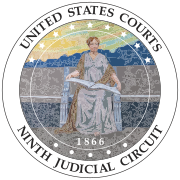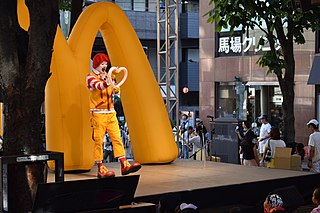
McDonaldland is a McDonald's media franchise and the fictional fantasy world inhabited by Ronald McDonald and his friends. Starting with the creation of Ronald McDonald in 1963 it is primarily developed and published by McDonald's, initial attempts to expand the McDonaldland universe by Needham, Harper & Steers were seemingly retconned due to legal issues, but ongoing aspects were expanded in McDonald's projects in collaboration with Data East, Virgin Interactive, Treasure, SEGA, and Klasky Csupo.

Land of the Lost is a children's adventure television series created by David Gerrold and produced by Sid and Marty Krofft, who co-developed the series with Allan Foshko. It is a live-action show mixed with stop-motion animated dinosaurs, originally aired on Saturday mornings from 1974 to 1976, on the NBC television network. CBS used it as a summer replacement series from 22 June 1985-28 December 1985 and 20 June 1987-5 September 1987. It has since become a 1970s American cult classic. Krofft Productions remade the series in 1991, and adapted it into a feature film in 2009.
Sid Krofft and Marty Krofft are a Canadian sibling team of television creators and puppeteers. Through their production company, Sid & Marty Krofft Pictures, they have made numerous children's television and variety show programs in the U.S., particularly in the 1970s, including H.R. Pufnstuf, Land of the Lost and Sigmund and the Sea Monsters. Their fantasy programs often feature large-headed puppets, high-concept plots, and extensive use of low-budget special effects.
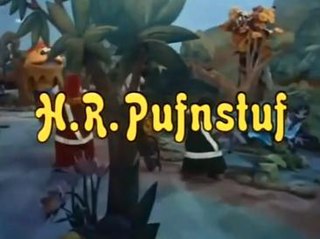
H.R. Pufnstuf is a children's television series produced by Sid and Marty Krofft in the United States. It was the first Krofft live-action, life-sized-puppet program. The seventeen episodes were originally broadcast Saturday mornings from September 6, 1969, to December 27, 1969. The broadcasts were successful enough that NBC kept it on the schedule until August 1972. The show was shot at Paramount Studios and its opening was shot at Big Bear Lake, California. Reruns of the show aired on ABC Saturday morning from September 2, 1972, to September 8, 1973, and on Sunday mornings in some markets from September 16, 1973, to September 8, 1974. It was syndicated by itself from September 1974 to June 1978 and in a package with six other Krofft series under the banner Krofft Superstars from 1978 to 1985. Reruns of the show were featured on TV Land in 1999 as part of its Super Retrovision Saturdaze Saturday morning-related overnight prime programming block and in the summer of 2004 as part of its TV Land Kitschen weekend late-night prime programming block, and it was later shown on MeTV from 2014 until 2016.
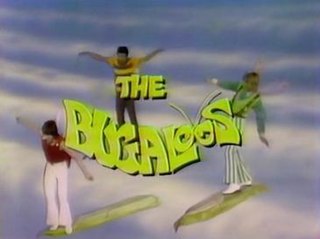
The Bugaloos is an American children's television series, produced by brothers Sid and Marty Krofft, that aired on NBC on Saturday mornings from 1970 to 1972. Reruns of the show aired in daily syndication from 1978 to 1985 as part of the "Krofft Superstars" package with six other Krofft series. The show features a musical group composed of four British teenagers in insect-themed outfits, constantly beset by the evil machinations of the talent-challenged Benita Bizarre, played by comedian Martha Raye.
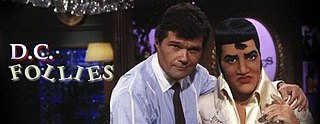
D.C. Follies is a syndicated sitcom which aired from 1987–1989. The show was set in a Washington, D.C. bar, where a bartender played by Fred Willard would welcome puppet caricatures of politicians and popular culture figures.
McDonald's has been involved in a number of lawsuits and other legal cases in the course of the fast food chain's 70-year history. Many of these have involved trademark issues, but McDonald's has also launched a defamation suit which has been described as "the biggest corporate PR disaster in history".
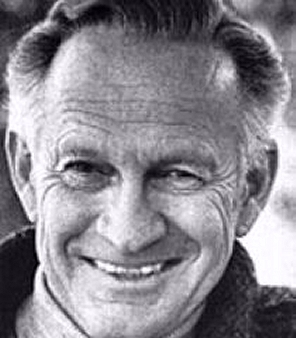
Walker Edmiston was an American puppeteer, and radio, television and voice actor.

The Krofft Superstar Hour is a Saturday morning children's variety show, produced by Sid and Marty Krofft. After eight episodes, the show was renamed The Bay City Rollers Show. It aired for one season from September 9, 1978 to January 27, 1979 on NBC. NBC also ran other repeat Krofft shows in an unrelated umbrella titled slot, Krofft Superstars, from 1978 to 1985.
The copyright law of the United States grants monopoly protection for "original works of authorship". With the stated purpose to promote art and culture, copyright law assigns a set of exclusive rights to authors: to make and sell copies of their works, to create derivative works, and to perform or display their works publicly. These exclusive rights are subject to a time limit, and generally expire 70 years after the author's death or 95 years after publication. In the United States, works published before January 1, 1928, are in the public domain.
The World of Sid & Marty Krofft at the Hollywood Bowl is a live show at the Hollywood Bowl on July 29, 1973 that was filmed and aired as a television special, produced by Sid and Marty Krofft. It originally aired in syndication on Thanksgiving weekend, November 24, 1973. Although shot at the Hollywood Bowl in front of a live audience, the special also used a laugh track, like other Krofft shows, for sweetening.
Substantial similarity, in US copyright law, is the standard used to determine whether a defendant has infringed the reproduction right of a copyright. The standard arises out of the recognition that the exclusive right to make copies of a work would be meaningless if copyright infringement were limited to making only exact and complete reproductions of a work. Many courts also use "substantial similarity" in place of "probative" or "striking similarity" to describe the level of similarity necessary to prove that copying has occurred. A number of tests have been devised by courts to determine substantial similarity. They may rely on expert or lay observation or both and may subjectively judge the feel of a work or critically analyze its elements.

Data East USA, Inc. v. Epyx, Inc. 862 F.2d 204, 9 U.S.P.Q.2d (BNA) 1322 was a court case between two video game manufacturers, where Data East claimed that their copyright in Karate Champ was infringed by World Karate Championship, a game created by Epyx. Data East released Karate Champ in arcades in 1984, and the game became a best-seller and pioneered the fighting game genre. The next year, Epyx published World Karate Championship for home computers, which sold 1.5 million copies. Data East sued Epyx, alleging that the game infringed on their copyright and trademark.
Van Charles Snowden was an American puppeteer active in the film and television industries for decades. Snowden performed as the H.R. Pufnstuf character on nearly every episode of the television series of the same name from 1969 to 1971. His other credits included the horror films Child's Play 2 and Child's Play 3, Tales from the Crypt and D.C. Follies.

Roth Greeting Cards v. United Card Co., 429 F.2d 1106, was a Ninth Circuit case involving the copyright of greeting cards that introduced the "total concept and feel" standard for determining substantial similarity. Courts used this test in later cases such as Reyher v. Children's Television Workshop (1976).

See v. Durang (1983) was a case where the author of a play claimed that another playwright had based a second play on a draft script that the plaintiff had written, infringing on its copyright. The court refused to consider the process by which the second play had been created, but chose to simply compare the end results. The court found no infringement, coining the axiom, "Copying deleted or so disguised as to be unrecognizable is not copying."

Miller v. Universal City Studios, Inc., is a case where an appeals court found that although the plaintiff apparently deserved to prevail, it reversed the jury verdict and remanded the case for retrial because it found reversible error in the trial judges' instructions to the jury. The appellate court found that the judge's jury instructions, which included the statement that the labor of research by an author is protected by copyright, had been given in error. The court noted that plaintiff, over the objection of the defense, had urged the district court judge to include this instruction.

Brown Bag Software v. Symantec Corp. is an intellectual property law case in which the United States Court of Appeals for the Ninth Circuit affirmed-in-part and vacated-in-part the previous ruling of the United States District Court for the Northern District of California. Brown Bag Software sued Symantec Corporation and John L. Friend, an individual software developer for Softworks Development, for copyright infringement and several state law claims regarding the similarity of Symantec Corporation's and Brown Bag Software's computer outlining programs.
Pharrell Williams et al. v Bridgeport Music et al., No. 15-56880 is a United States Court of Appeals for the Ninth Circuit case concerning copyright infringement of sound recording. In August 2013, Pharrell Williams, Robin Thicke and Clifford Joseph Harris filed a complaint for declaratory relief against the members of Marvin Gaye's family and Bridgeport Music in the United States District Court for the Central District of California, that the song "Blurred Lines" did not infringe the copyright of defendants in "Got to Give It Up" and "Sexy Ways" respectively.
Marcus Gray et al. v. Katy Perry et al. was a copyright infringement lawsuit against Katy Perry, Jordan Houston, Lukasz Gottwald, Karl Martin Sandberg, Henry Russell Walter ("Cirkut"), Capitol Records and others, in which the plaintiffs Marcus Gray ("Flame"), Emanuel Lambert and Chike Ojukwu alleged that Perry's song "Dark Horse" infringed their exclusive rights in their song "Joyful Noise" pursuant to 17 U.S.C § 106. The focus of the similarity was a short descending pattern known in music as an "ostinato". In both songs, a short ostinato is used repeatedly to form part of the beat of each song and both ostinatos share similar descending shapes. Gray et al. claimed that the instrumental beat of the ostinato in "Joyful Noise" was protectable original expression and that Perry et al. had access to and copied the ostinato when composing "Dark Horse." On March 16, 2020, Judge Christina A. Snyder ultimately found that Gray et al. had failed to satisfy the extrinsic test for substantial similarity, overturning a previous jury verdict which had sided with the plaintiffs. Snyder's ruling was affirmed on appeal.
